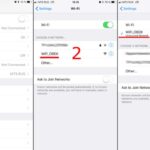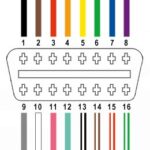The automotive repair industry is constantly evolving, with technological advancements driving new efficiencies and capabilities. Among these innovations, Mileage Correction Software Obdii Programmer tools have emerged as indispensable assets for professionals. These sophisticated devices, connecting through a vehicle’s On-Board Diagnostic II (OBDII) port, offer a streamlined approach to mileage correction, alongside a host of other diagnostic and repair functions. This article delves into the world of mileage correction software and OBDII programmers, highlighting their importance in modern automotive servicing and referencing the continuous updates and advancements seen in tools like the X-Tool.
Understanding Mileage Correction and OBDII Programmers
Mileage correction, also known as odometer correction, is a specialized procedure that involves adjusting the displayed mileage in a vehicle’s instrument cluster. While this might seem straightforward, it requires precision and expertise to ensure accuracy and legality. OBDII programmers are the key tools that facilitate this process. They are essentially advanced diagnostic devices that communicate with a vehicle’s electronic control units (ECUs) through the standardized OBDII port. This port, a standard feature in most modern vehicles, allows for a wide range of diagnostic and programming operations, including mileage correction when performed by qualified professionals for legitimate reasons such as gauge replacement or ECU malfunctions.
The Evolution of Mileage Correction Tools: Insights from X-Tool Updates
Examining the update logs of tools like the X-Tool provides a fascinating glimpse into the rapid development of mileage correction capabilities. The continuous stream of updates reveals an expanding compatibility list, encompassing a vast array of vehicle makes and models. Let’s explore some key highlights from recent X-Tool updates that underscore the evolution of mileage correction software:
Expanding Vehicle Coverage:
The updates consistently showcase the addition of new vehicle models for mileage correction via OBDII. For instance, updates have included:
- Ford KA Plus (2018 onwards): Demonstrating support for newer Ford models, highlighting the tool’s ability to keep pace with automotive industry releases.
- Peugeot and Citroen Models (2019-2022): Extensive coverage for Peugeot 208 II, 308 II, and Citroen DS3 II, showcasing advancements in handling newer Visteon dashboards.
- Opel Corsa and Mokka (2021 onwards): Adding support for recent Opel models, reflecting the tool’s adaptability to different European brands.
- Ford F150 (2015 onwards): Coverage for popular American trucks, indicating a global vehicle market focus.
- Hyundai and Kia Models (2021 onwards): Including Hyundai Venue and Verna, highlighting expanding support for Asian automotive brands and their advanced RH850 systems.
- Suzuki Swift (2022 onwards): Support for the latest Suzuki models, demonstrating ongoing updates for various Japanese manufacturers.
- Alfa Romeo (Giulia, Stelvio, Giulietta, Mito): Broadening support for Italian brands, covering a range of Alfa Romeo models for odometer repair via OBDII.
- Jeep Wrangler Sahara (2019 onwards): Adding capabilities for Jeep models, showcasing versatility across different vehicle types.
- Tata Motors (Bolt, Harrier, Hexa, Tiago, Tigor, Nexon): Inclusion of Indian market vehicles, indicating global applicability and adaptation to diverse automotive markets.
These examples from the X-Tool update logs illustrate the continuous effort to expand vehicle compatibility, ensuring that professionals have access to mileage correction software for an ever-growing range of vehicles.
Technological Advancements in OBDII Programming:
Beyond just adding new models, the updates also reveal advancements in the technology itself:
- RH850 and 70F35xx Microcontroller Support: Frequent mentions of RH850 and 70F35xx microcontrollers indicate the increasing complexity of modern vehicle electronics and the software’s ability to handle these advanced systems, often used in dashboards and ECUs.
- OBDII and DIAG (Diagnostic) Methods: The updates distinguish between OBDII and DIAG methods, suggesting a refined approach to different vehicle systems. OBDII is the standard port, while DIAG may refer to direct diagnostic connections, showcasing the tool’s adaptability to various communication protocols.
- EEPROM, Flash, and DataFlash Read/Write Capabilities: References to reading and writing EEPROM (Electrically Erasable Programmable Read-Only Memory), Flash memory, and DataFlash highlight the deep level of access provided by these programmers. Mileage information and other critical vehicle data are stored in these memory types, and the software’s ability to manipulate them is crucial for effective mileage correction and other repairs.
- Bench Mode Programming: The inclusion of “bench mode programming” for EDC17/MED17 ECUs signifies advanced capabilities. Bench mode allows for direct connection to the ECU outside of the vehicle, offering an alternative programming method when OBDII access is limited or not feasible. This demonstrates a commitment to providing comprehensive solutions for various scenarios.
Beyond Mileage Correction: Multifunctional Diagnostic Tools
While mileage correction is a key feature, OBDII programmers like X-Tool are far more than just mileage adjustment tools. The update logs reveal a wide array of functionalities, making them versatile diagnostic solutions:
- Airbag System Repair: Updates frequently include “AIRBAG” functions for various Mercedes-Benz, Volvo, Kia, and Hyundai models. This encompasses crash data clearing, error erasure, and EEPROM read/write operations for airbag modules. This is a critical safety feature, enabling technicians to reset airbag systems after deployment, ensuring vehicle safety and compliance.
- ECU Programming and Configuration: Updates mention ECU programming and configuration for various brands (e.g., MEDC17, EDC17, BSI Continental). This includes reading/writing flash memory, software version updates, and component configuration, essential for ECU repairs, replacements, and performance tuning in some cases.
- Key Programming and Immobilizer Functions: While not explicitly detailed in these updates, OBDII programmers often include key programming and immobilizer system functionalities. These are crucial for key replacements, adding new keys, and diagnosing immobilizer issues that prevent vehicle starting.
- Steering Angle Sensor (SAS) Recovery: The inclusion of SAS recovery functions points to the tool’s capability to address chassis and stability control systems. Recalibrating or recovering the SAS is necessary after wheel alignments, steering system repairs, or sensor replacements.
- Dashboard Calculator: Added dashboard calculator features for brands like Mahindra and Yamaha demonstrate the tool’s expanding utility beyond basic diagnostics, offering specialized calculations for specific vehicle systems.
- Bug Fixes and Software Stability: Regular mentions of “bug fixes” and “new software versions” are crucial for ensuring tool reliability and accuracy. Software updates address identified issues, improve performance, and maintain compatibility with the latest vehicle systems.
The Benefits of Using Mileage Correction Software OBDII Programmers
For automotive professionals, investing in mileage correction software obdii programmer tools offers numerous advantages:
- Efficiency and Speed: OBDII programming is significantly faster and more efficient than traditional methods that may require dismantling dashboards or physically accessing memory chips. The OBDII port provides a direct communication channel, streamlining the process.
- Wide Vehicle Compatibility: As demonstrated by the X-Tool updates, these tools offer extensive vehicle coverage, supporting a broad range of makes, models, and years. This versatility is essential for workshops servicing diverse customer vehicles.
- Multifunctionality: Beyond mileage correction, these programmers often incorporate a wide range of diagnostic and repair functions, making them a valuable all-in-one solution for various automotive servicing needs. This reduces the need for multiple specialized tools, saving costs and workshop space.
- User-Friendliness: Modern OBDII programmers are designed with user-friendly interfaces, often featuring intuitive menus and step-by-step instructions. This reduces the learning curve and allows technicians to quickly utilize the tool’s capabilities.
- Regular Updates and Support: Reputable tools like X-Tool provide regular software updates to expand vehicle coverage, add new features, and address software bugs. This ensures that the tool remains current and effective in the rapidly evolving automotive landscape. This ongoing support and development are crucial for protecting the investment in these tools.
Choosing the Right Mileage Correction Software and OBDII Programmer
Selecting the appropriate mileage correction software obdii programmer is a critical decision for automotive professionals. Key factors to consider include:
- Vehicle Compatibility: Ensure the tool supports the specific vehicle makes and models that your workshop commonly services. Check the manufacturer’s vehicle coverage list and verify that it is regularly updated.
- Functionality: Evaluate the range of functions offered beyond mileage correction. Consider whether airbag reset, ECU programming, key programming, or other diagnostic features are essential for your needs.
- Ease of Use: Opt for a tool with an intuitive interface and clear instructions. A user-friendly design will minimize training time and maximize technician efficiency.
- Reliability and Accuracy: Choose a reputable brand known for producing reliable and accurate tools. Read reviews and seek recommendations from other professionals in the industry.
- Update and Support: Inquire about the frequency of software updates and the quality of technical support provided by the manufacturer. Regular updates and responsive support are vital for long-term tool performance and usability.
- Cost and Return on Investment: Consider the initial investment cost and weigh it against the potential return on investment. A versatile and reliable tool can quickly pay for itself by increasing workshop efficiency and expanding service offerings.
Conclusion: Embracing the Future of Automotive Repair
Mileage correction software obdii programmer tools represent a significant advancement in automotive diagnostics and repair. By leveraging the standardized OBDII port and sophisticated software, these tools empower professionals to perform mileage correction efficiently, diagnose complex vehicle systems, and offer a wider range of services. As the automotive industry continues to evolve, embracing these technological innovations is crucial for workshops seeking to remain competitive, efficient, and at the forefront of automotive servicing. Tools like the X-Tool, with their continuous updates and expanding capabilities, exemplify the ongoing revolution in automotive diagnostics, driven by the power of software and OBDII technology.


